Guide: Flexible vs. Stiff Running Shoes
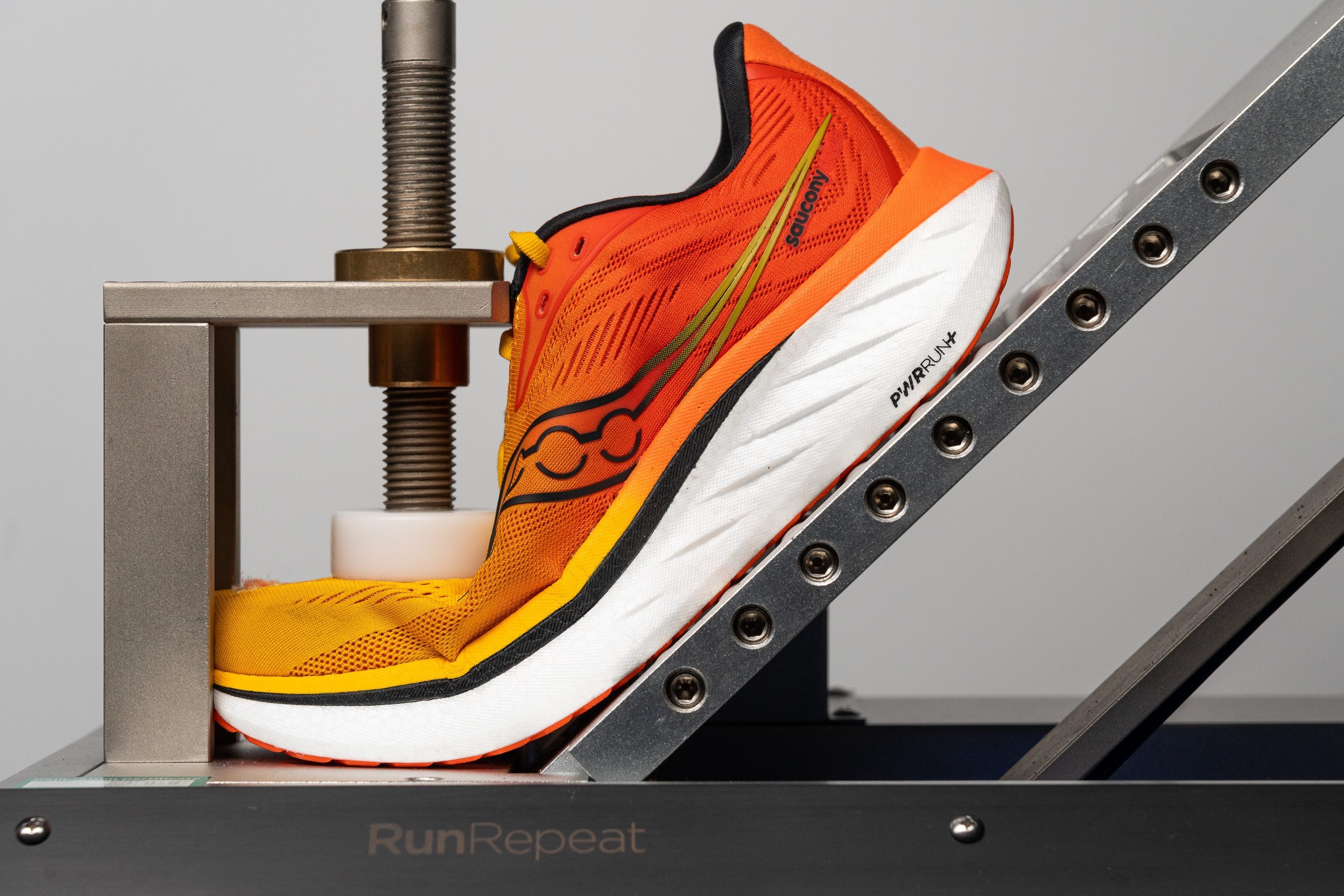
Why are stiff running shoes getting the spotlight? Why do runners flex and twist shoes in running stores? How is stiffness related to your running performance?
20+ hours of research is summarized in this guide - covering both scientific studies, authoritative articles and our lab data.
|
Choose flexible running shoes if you are looking for comfort and shoes for long runs. Most daily trainers focus on flexibility. Choose stiff running shoes if you want to improve your running performance and do fast runs, or if you’re looking for stability features for overpronation. |
If you were actually looking for soft shoes and not flexible ones, or firm midsoles and not stiff ones, check out our guide Soft vs. Firm running shoes.
As always, a disclaimer: individual approach matters a lot, especially when talking about performance improvement. Even this study suggests it when it comes to finding optimal bending stiffness for a runner. There are a lot of things that influence responsiveness and stiffness is only one of them. It has to play perfectly with other pieces of the puzzle to deliver the promised running performance improvement.
Testing the stiffness in the lab
To objectively test the stiffness of shoes, we bought a specialized machine that allows us to do that. First, we lock the forefoot in place. This lifts the heel due to the forefoot rocker. We adjust the angle of the plate so that it touches the heel. This is a starting position and we bend the shoe to 30 degrees from there. While doing so, we measure the force needed to bend the shoe to 30 degrees.
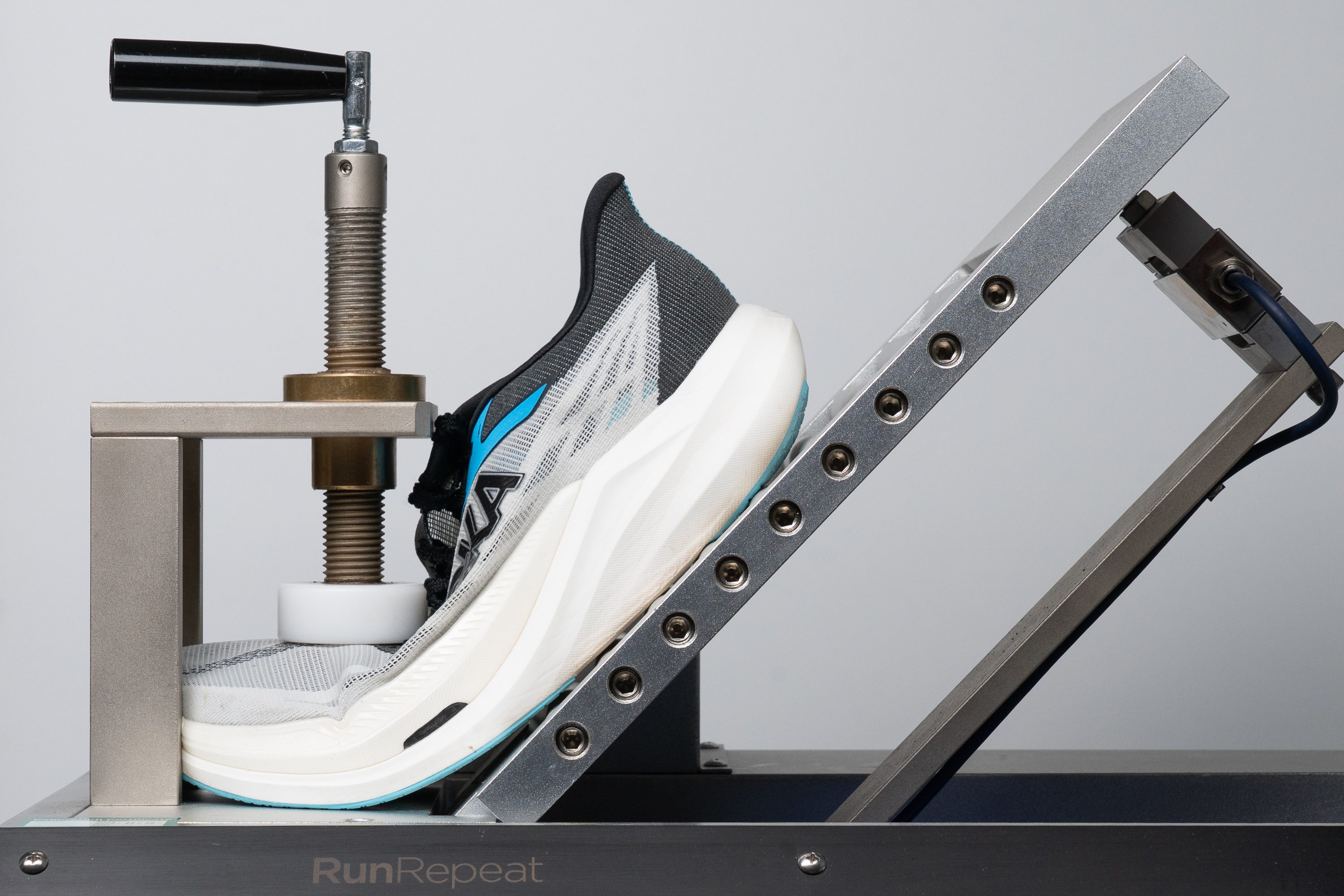
When it comes to the lab test results, we consider running shoes flexible when the force needed to bend them to 30 degrees is lower than 10N, moderate when the force falls between 10 and 17N, and stiff when the force is higher than 17N.
Stiffer shoes improve running performance
What stiff shoes are mostly about is responsiveness: you can raise the stiffness of the shoes to improve speed and economy, but only up to a point. After that, performance drops. However, that point isn’t fully understood.
Even though the brands are working hard on it, it still can’t be fully dissected because no runner’s body is the same, and that’s why the individual approach is important. It’s also why carbon-plated premium shoes might work better for elite runners who land on the forefoot than for recreational (slower, heavier) runners. This is an illustrative example of what happens to running performance when the stiffness of the shoes increases (as explained in this study).
This study has shown that stiffness is beneficial if it does not disturb the natural joint flexion.
3 steps to go stiffer
When looking at the flexibility of the shoes: most of them will work for you. However, if you want to get into the stiffness game, follow these steps:
- Start with flexible running shoes. Pay attention to your gait and overall movement.
- Buy a bit stiffer shoe. Try and notice whether your gait changed. If it has, it is too stiff for you. It if hasn’t, you are good to go. Also, listen to your landing: the quieter it is, the better the shoe for you. How loud your landings are can depend on the flexibility of the shoe and whether it works for you.
- You can go stiffer as long as your gait is not changed. Going for the extremes, from very flexible to very stiff, may take a burden on your feet. If you’re unsure, use video to analyze your potential stride changes: record yourself running in both pairs of shoes (flexible and stiff) and compare.
It’s also important to note that the stiffness of your forefoot is dominant: the total stiffness during running is dominated by the stiffness of your forefoot and not by that of the shoe. Forefoot stiffness and midsole bending stiffness act together during push-off, but the shoe stiffness is generally much lower than the mean human forefoot stiffness (source).
2 types of stiff running shoes
Stiff running shoes are usually split into two groups based on the purpose of their stiffness:
- Stiff running shoes for stability and protection. They don’t have carbon plates. These shoes are stiff due to their stability features for mild or severe overpronation (we’ve covered pronation in great detail in this guide).
- Stiff shoes for performance use stiff foams, combinations of foams, or (carbon/nylon) plates that stiffen them up.
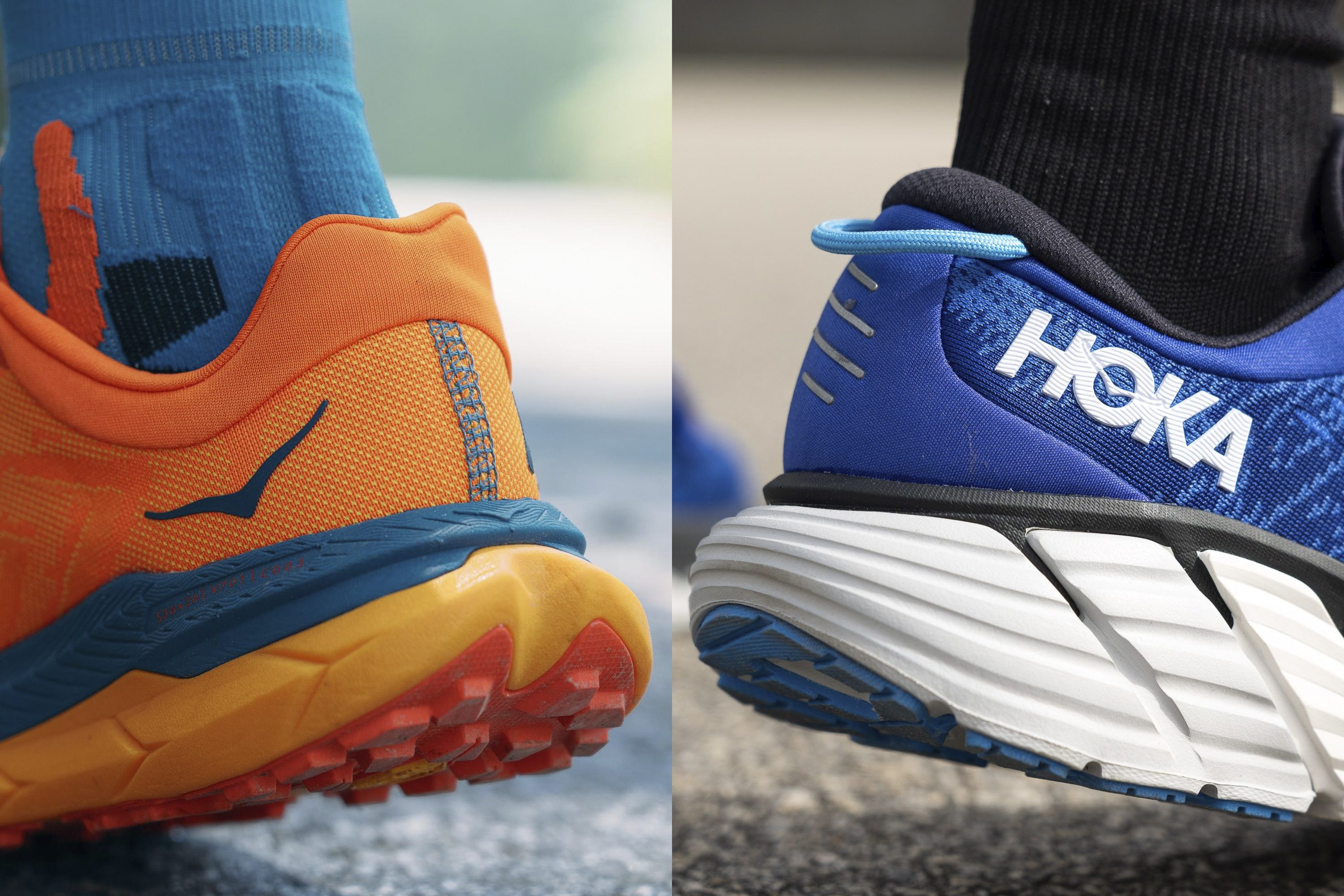
1st purpose of stiff shoes: stability & protection
This is a list of features of running shoes that are stiff because they offer stability and protection:
- Stability features help with overpronation (as shown here, here and here).
- More expensive than neutral shoes (with no stability features), cheaper than carbon-plated shoes.
- Less responsive and usually made for daily runs (not races).
- Usually made for heel strikers.
- They can have a dual-density midsole, guide rails, and midfoot supportive elements to decrease overpronation.
This is how a heel focused on stability (for overpronation) looks like:
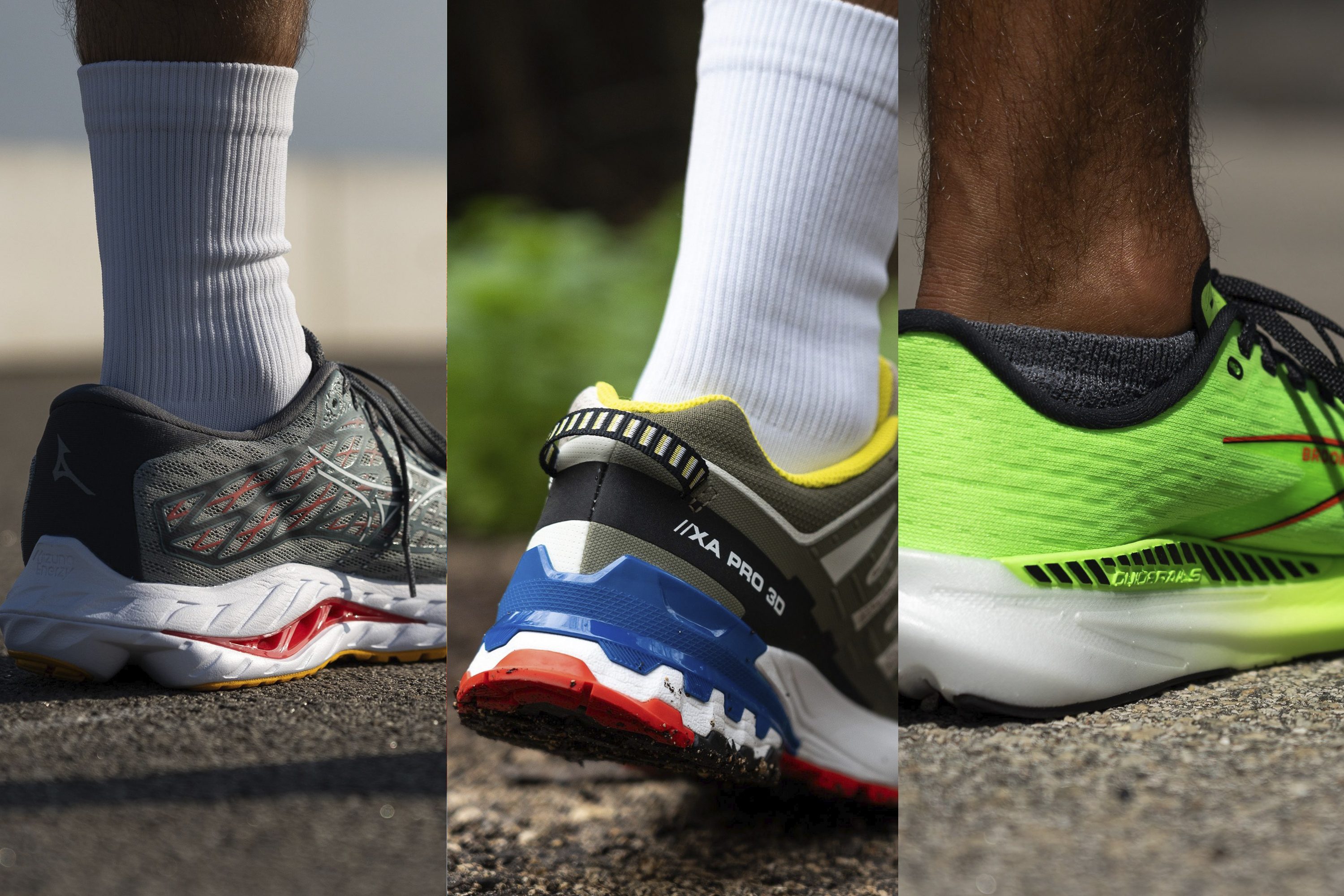
| We have covered this topic in great detail in our guide: Arch Support for Runners: What, How and Why. |
2nd purpose of stiff shoes: performance
This is a list of features of running shoes without carbon plates that are stiff because they are tuned for performance:
- They can be much more responsive than flexible shoes but also less responsive than plated shoes.
- Offer a stiff ride.
- Only a small number of models are stiff and without plates.
This is a list of features of running shoes with carbon plates that are stiff because they are tuned for performance:
- They improve the running economy (shown here and here).
- They reduce the amount of energy lost at the metatarsophalangeal joint (as explained here).
- Take some getting used to, especially for walking.
- May give the best results if forefoot striking in them.
- Rocker geometry.
- Very responsive, feel like trampolines.
- Made for elite runners and are usually premium priced.
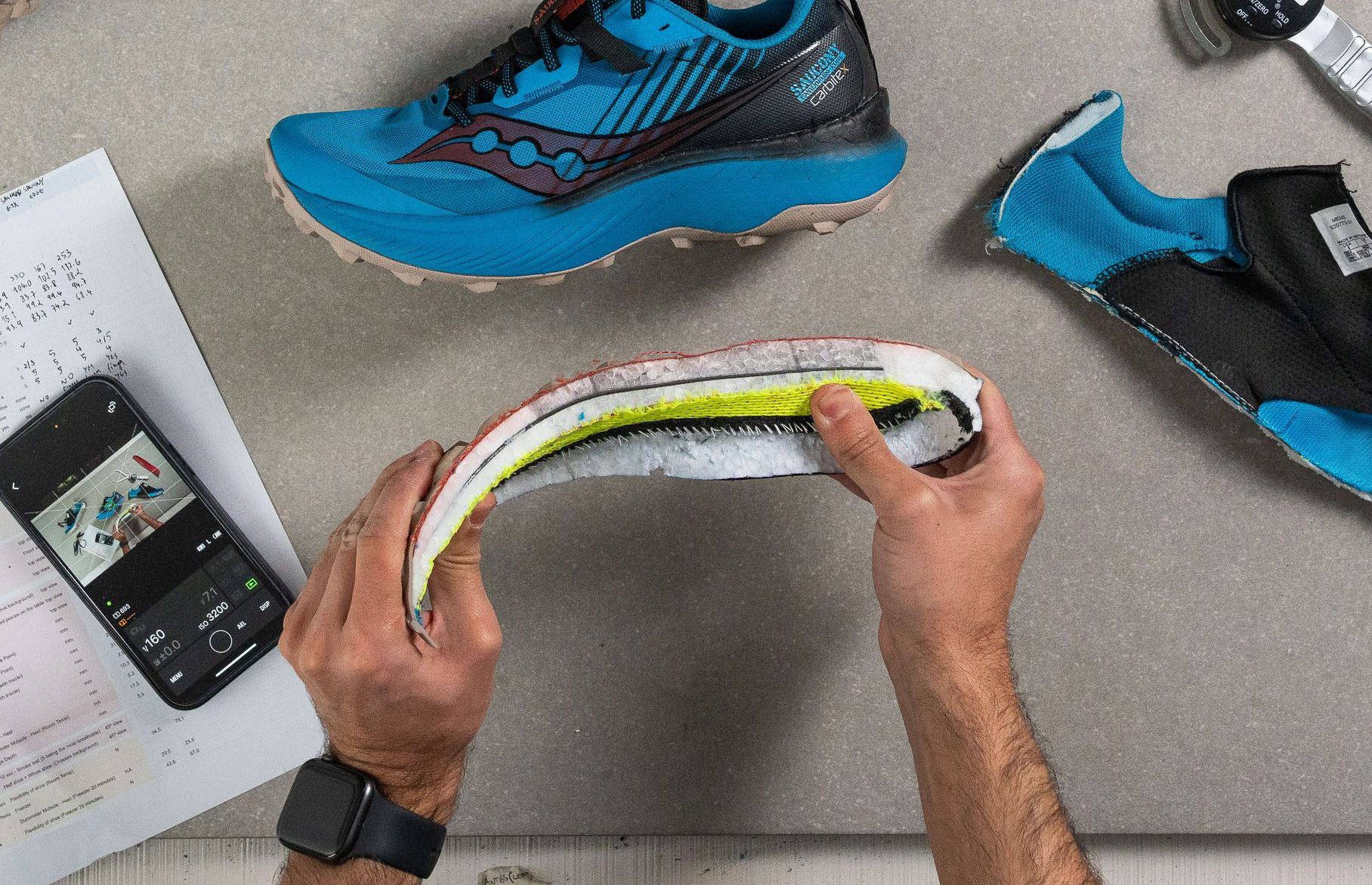
To learn more about these, read our in-depth guide on carbon-fiber plated shoes. They cause significantly more positive work and less negative work at the metatarsophalangeal joint and less positive work at the knee joint.
Most flexible running shoes
Stiffest running shoes
2 reasons carbon plates might not work for you
High-priced carbon-plated shoes are created for elite runners with the intention to improve their running economy and performance.
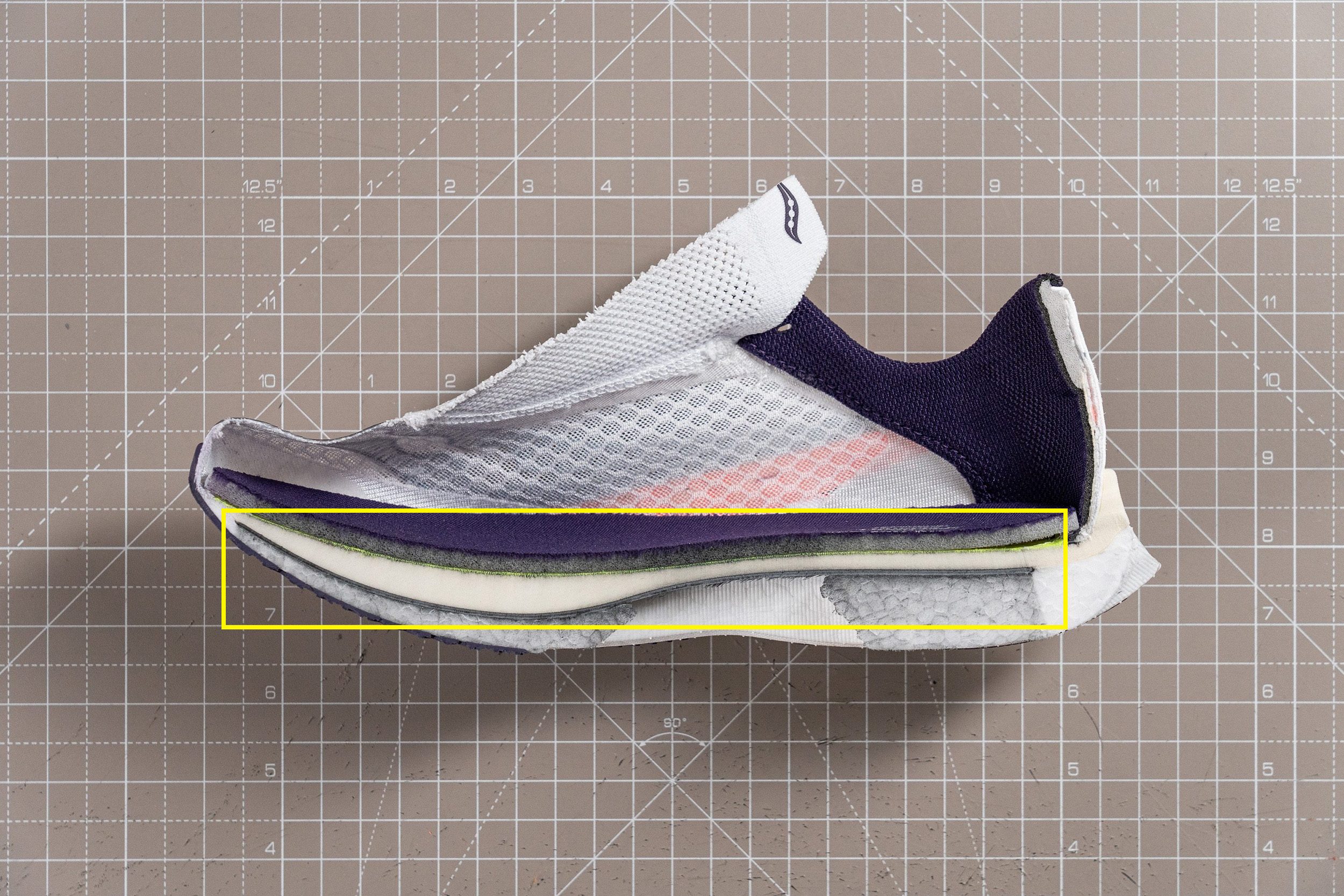
Here are 2 reasons why this matters:
- While foams allow for great tolerance levels, carbon plates and plate stiffness do not. For them to work (great), researchers at Nike focused on a group of runners with similar characteristics (weight, contact time, pace, limb stiffness). This is why Vaporfly 4% might not work for you if you’re slower than elite runners or, simply, weigh more.
- The so-called spring or pop in running shoes - the most wanted feature that promises responsiveness and better performance, is specially tuned for elite runners who have a certain stride. If you strike the land in a different way, have stronger or weaker impact forces, different ground contact times… you simply won’t get the same propulsion as elite runners. To learn more about responsiveness, we recommend reading our guide: Energy return in running shoes explained.
Here's how it looks like when we cut a carbon-plated running shoe in our lab:
We've covered this topic in great detail in our guide: Carbon-Plated Shoes Cut In Half, Explained and Lab-Tested.
DIY test for flexibility and stiffness
Manually testing the shoes to check their stiffness consists of 2 steps:
- Bending the shoes (longitudinal stiffness) - place the heel of the shoe in one hand and the tip of the forefoot in another hand. Try to bring them together.
- Twisting the shoes (torsional stiffness). Grab opposite ends of the shoe and twist the shoe.
While some say that the shoe’s flexibility might not be assessed well only by playing around with it in your hands or reading lab numbers, because it performs differently once worn and run in, for non-researchers, this is really a good way of determining the level of flexibility.
Flexibility changes with cold weather
In our lab, we used to test the shoe's flexibility after it had spent 20 minutes in the freezer (we stopped with the introduction of Methodology 2.0). This allowed us to understand how foams behave in cold weather. The average change between room-temperature flexibility and post-freezer flexibility was 38.1%.
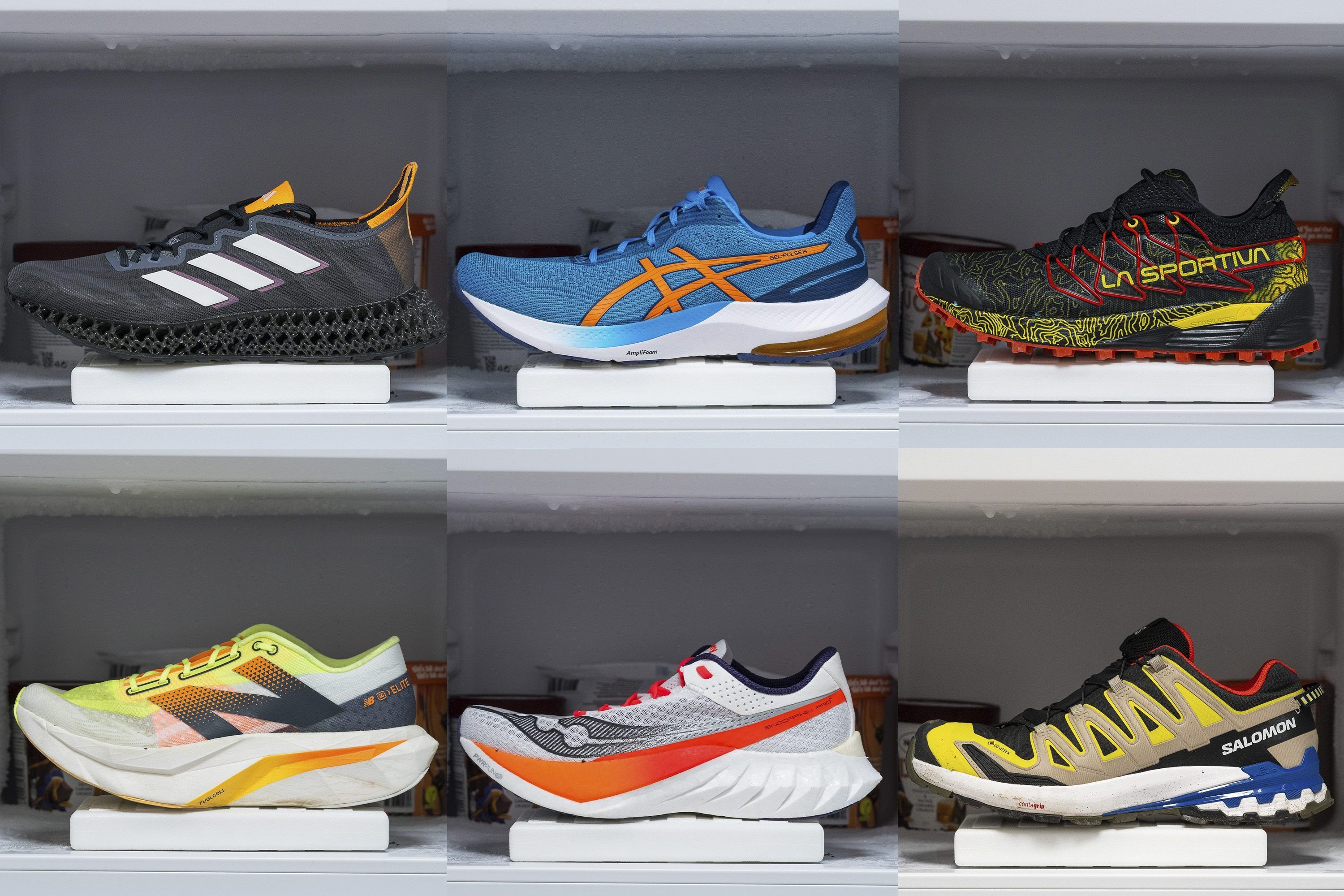
Shoe experts and enthusiasts around the world reported different experiences depending on the temperature. The most curious case was Bondi 7, where we read everything from “extremely stiff” to “really flexible”.
Stiffness isn't the only thing that changes with temperature. To learn about, well, basically everything that changes in running shoes once we expose them to cold weather, read our guide Effects of temperature on running shoes.
Stiffness vs. hardness & Flexibility vs. softness
In order to make the distinction between flexibility and softness (which are often confused), we will explain both:
- Midsole stiffness or flexibility explains how much you can bend and twist the shoe. Runners usually describe these using phrases like “stiff ride”, “really flexible”, “don’t adapt to the terrain”.
- Midsole hardness or softness explains how comfortable the shoes are in terms of cushioning: do your feet sink in, is the experience pillowy like, etc. Runners describe cushioning using phrases like “running on clouds”, “walking on pillows”, “soft”, “squishy”, “dense”, "plush". We wrote about this in great detail here Guide: Soft vs. firm running shoes.
This is why there are shoes that are soft yet stiff (the most popular example is carbon-plated running shoes featuring soft foams that are stiffened up by using the plates, which helps with balance a lot). There aren’t many very flexible shoes that are plush, or shoes that are at the same time very stiff and firm. The majority are in between.
4 features of flexible running shoes
Flexible running shoes are made for comfort. This feature was highlighted when the minimalist trend hit the scene - one of the main characteristics of minimalist and barefoot running shoes is being able to flex them and bend them. Some, even up to a point where you can curl them up completely due to no stability features inserted.
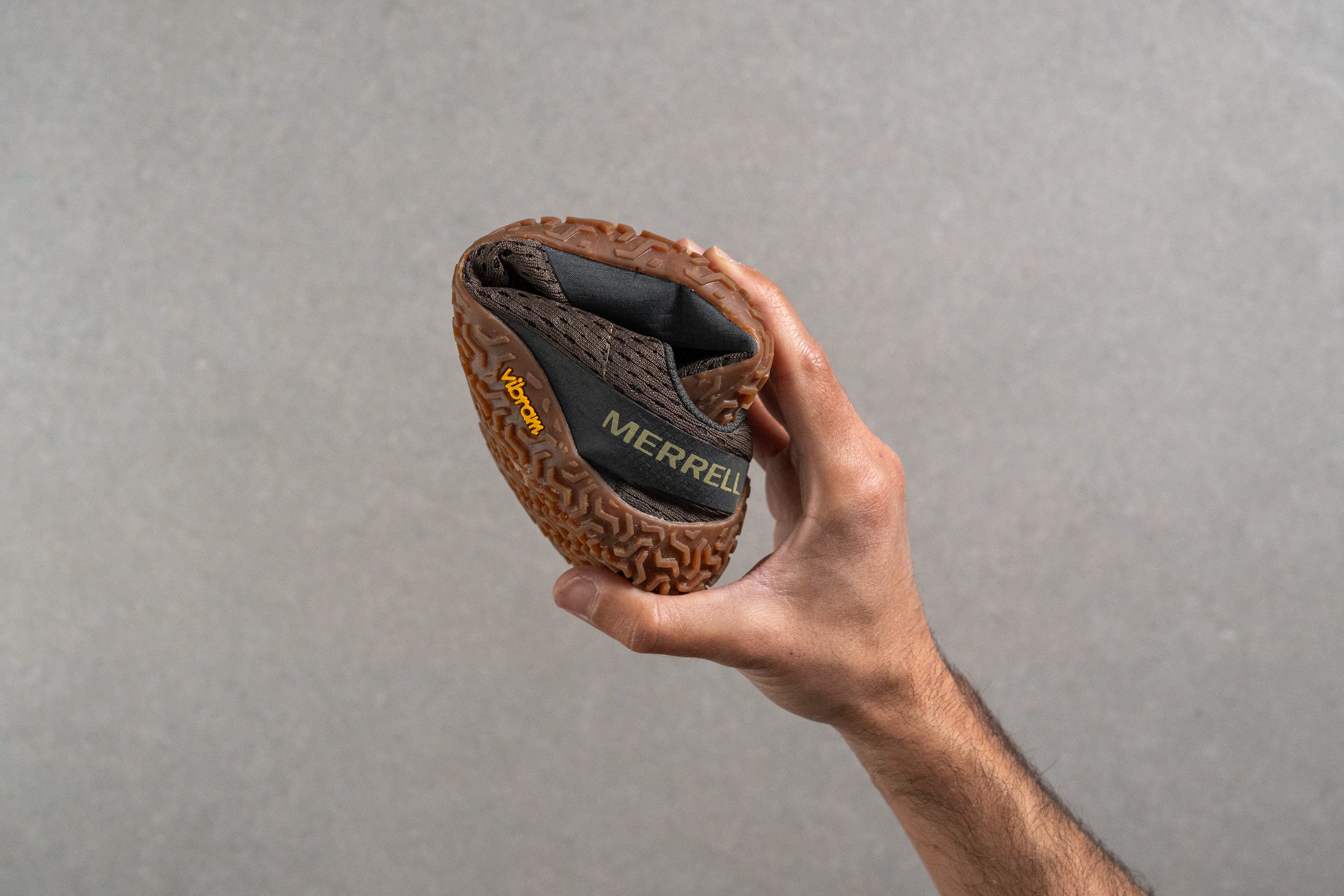
Flexible running shoes are, in general, characterized by:
- Being made for comfort.
- Having no stability features. They are usually neutral and recommended for runners who don’t overpronate.
- Having a better grip than stiff shoes because they can adapt to the terrain better. This is especially important in trail running.
- Being lightweight.
Up to recently, flexibility meant comfort. However, new technologies are making it possible for stiff shoes to be comfortable as well, even for them to have plush cushioning. These technologies are also allowing stiff shoes to be lightweight, a feature that used to belong to flexible running shoes mostly.
